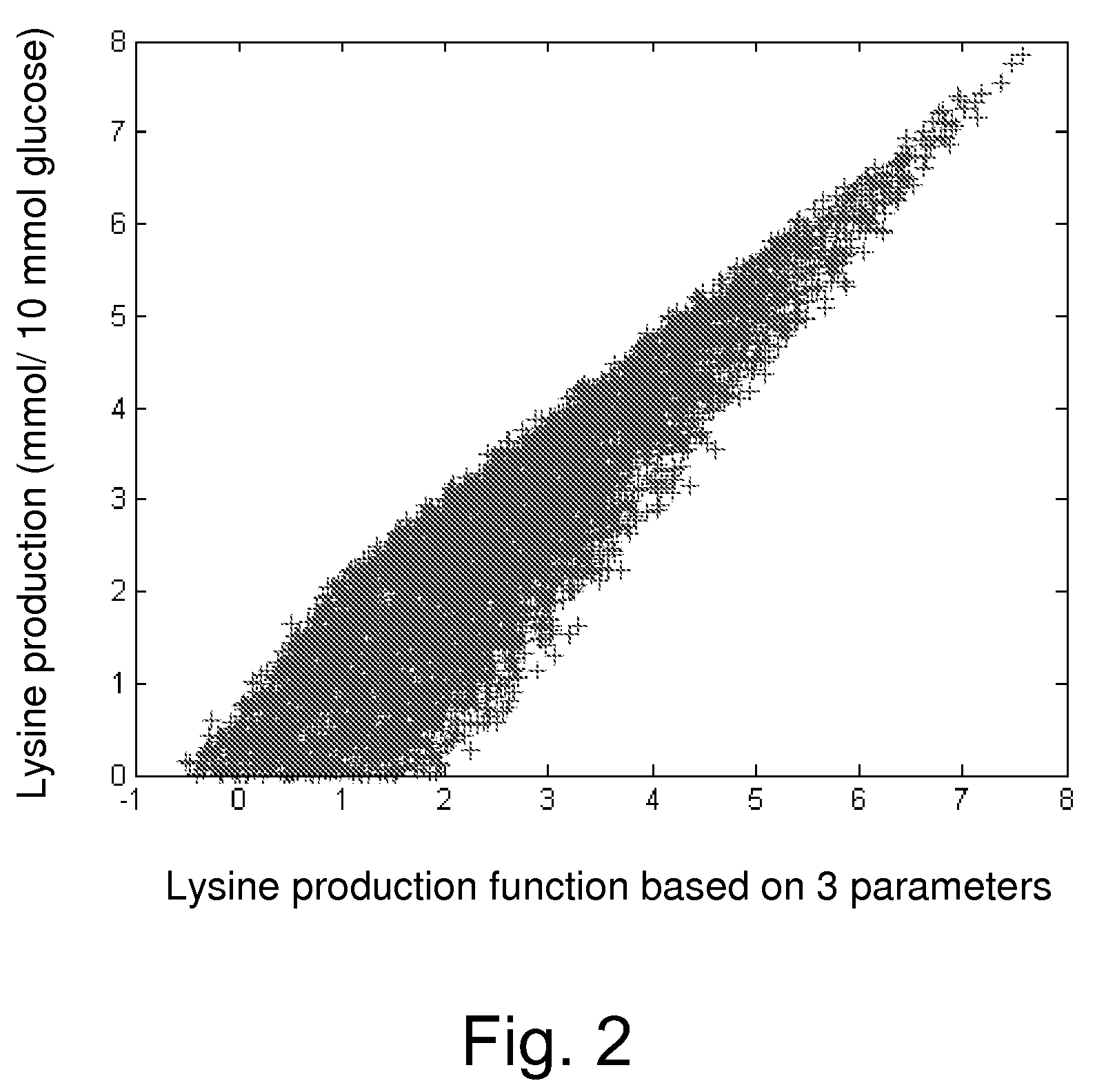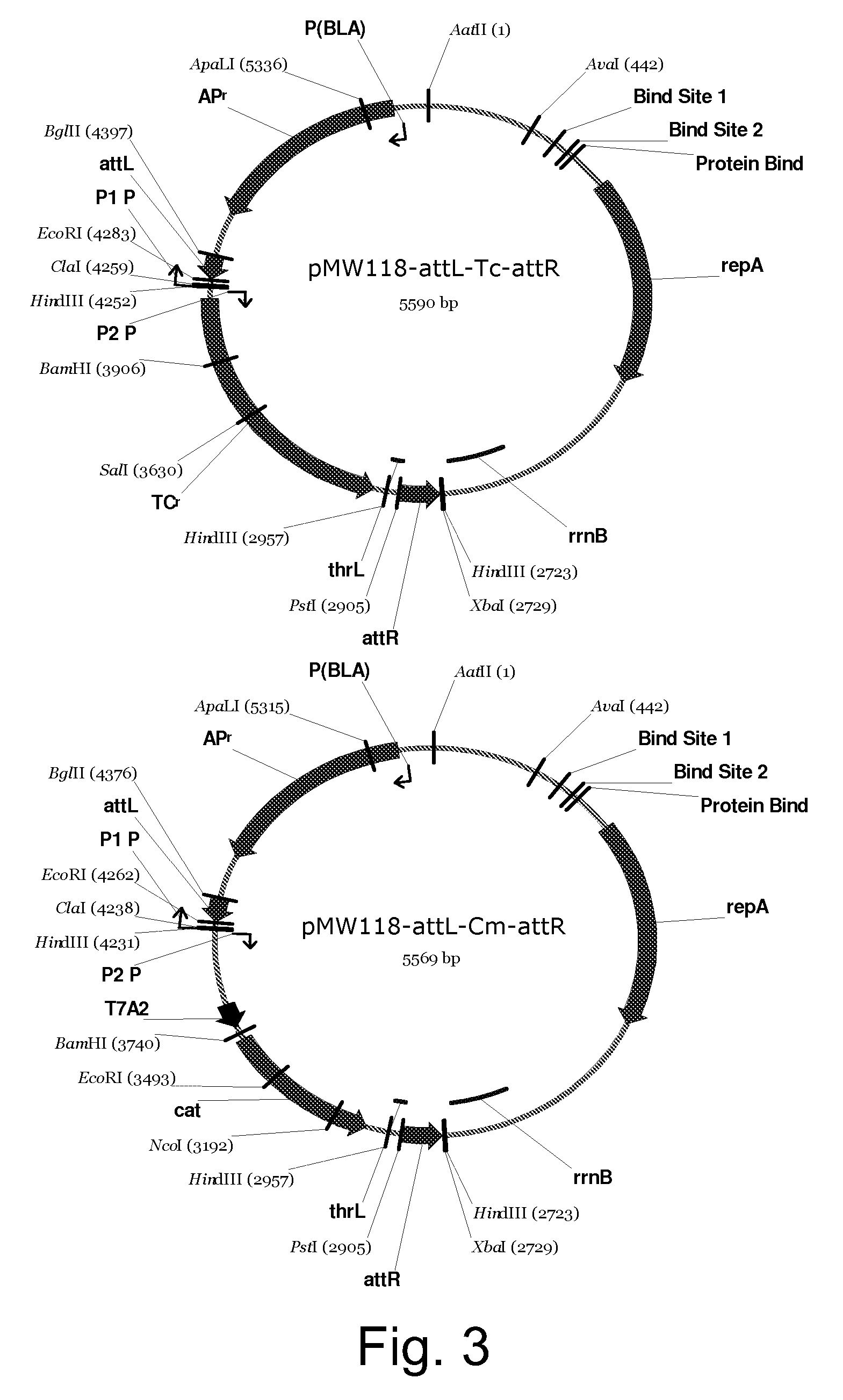Method for producing L-lysine or L-threonine
a technology of lysine and lthreonine, which is applied in the field of producing llysine or lthreonine, can solve the problems of -lysine or l-, no method has been disclosed for theoretically predicting a specific flux as a target for directly improving cellular substance production, and achieve the effect of improving the ability to produce l-lysine or l-threonin
- Summary
- Abstract
- Description
- Claims
- Application Information
AI Technical Summary
Benefits of technology
Problems solved by technology
Method used
Image
Examples
example 1
[0114]Determination of Metabolic Flux with Respect to L-lysine
[0115](1) Creation of Stoichiometric Matrix
[0116]A stoichiometric equation for calculating a metabolic flux was constructed by assuming a quasi-steady state of intracellular metabolic intermediates (Savinell, J. M. and Palsson, B. O. J., Theor. Biol., 154:421-454, 1992; Vallino, J. J. and Stephanopoulos, G., Biotechnol. Bioeng., 41:633-646, 1993). The reaction formulas included in this model are shown in Table 2. Descriptions of the abbreviations used in the present invention are listed in Table 1. Some reactions without branching were consolidated to simplify the formulas. Since the pentose phosphate pathway is complicated, it was represented by two formulas. Reported data was used for the component ratio of biomass (Neidhardt, F. C. et al., Physiology of the Bacterial Cell., Sinauer Associates, Massachusetts, 1990) and the biomass was represented by using the reaction formula [68]. The degree of freedom of the stoichiom...
example 2
[0127]Determination of Metabolic Flux with Respect to L-threonine
[0128]By the same method as in Example 1, an equation showing the best fit for each number of contained terms was selected with respect to L-threonine. As for the biomass yield, a fit of R2=0.986 was obtained with only 4 terms, isocitrate lyase (ICL), malic enzyme (MEZ), PEP carboxylase (PEPC) and ATPase.
Biomass yield=1.260−0.101(ICL)+0.093(MEZ)−0.101(PEPC)−0.009(ATPase) Equation 4)
[0129]The threonine yield could be fit with a model including the same 3 parameters, and the result of R2=0.937 was obtained.
Threonine yield=−1.432+1.090(ICL)−1.080(MEZ)+1.087(PEPC) Equation 5)
[0130]These results revealed that the biomass yield positively correlated with the flux of malic enzyme, and that threonine production positively correlated with the fluxes of PEP carboxylase and isocitrate lyase (glyoxylate cycle). Therefore, with respect to threonine production, a guideline for improving bacterial strains could be also obtained, an...
example 3
[0131]Construction of Malic Enzyme-Deficient L-Lysine-Producing Bacterium
[0132]Strain WC196 was used as the L-lysine-producing strain of Escherichia coli which is resistant to AEC (S-(2-aminoethyl)cysteine) (International Publication No. WO 96 / 17930).
[0133]The malic enzyme from Escherichia coli includes one using NAD as coenzyme (EC 1.1.1.38) and one using NADP as coenzyme (EC 1.1.1.40). These enzymes are encoded by the sfcA and b2463 genes, respectively.
[0134]The sfcA and b2463 genes are deleted by a combination of the “red-driven integration” method, which was originally developed by Datsenko and Wanner (Proc. Natl. Acad. Sci. USA, 2000, 97, 6640-6645), and the excision system method, derived from lambda phage (J. Bacteriol. 2002 September; 184(18): 5200-3. Interactions between integrase and excisionase in the phage lambda excisive nucleoprotein complex. Cho EH, Gumport RI, Gardner JF.). According to the red-driven integration method, a gene-disrupted strain can be constructed in ...
PUM
| Property | Measurement | Unit |
|---|---|---|
| pH | aaaaa | aaaaa |
| temperature | aaaaa | aaaaa |
| degree of freedom | aaaaa | aaaaa |
Abstract
Description
Claims
Application Information
 Login to View More
Login to View More - R&D
- Intellectual Property
- Life Sciences
- Materials
- Tech Scout
- Unparalleled Data Quality
- Higher Quality Content
- 60% Fewer Hallucinations
Browse by: Latest US Patents, China's latest patents, Technical Efficacy Thesaurus, Application Domain, Technology Topic, Popular Technical Reports.
© 2025 PatSnap. All rights reserved.Legal|Privacy policy|Modern Slavery Act Transparency Statement|Sitemap|About US| Contact US: help@patsnap.com



